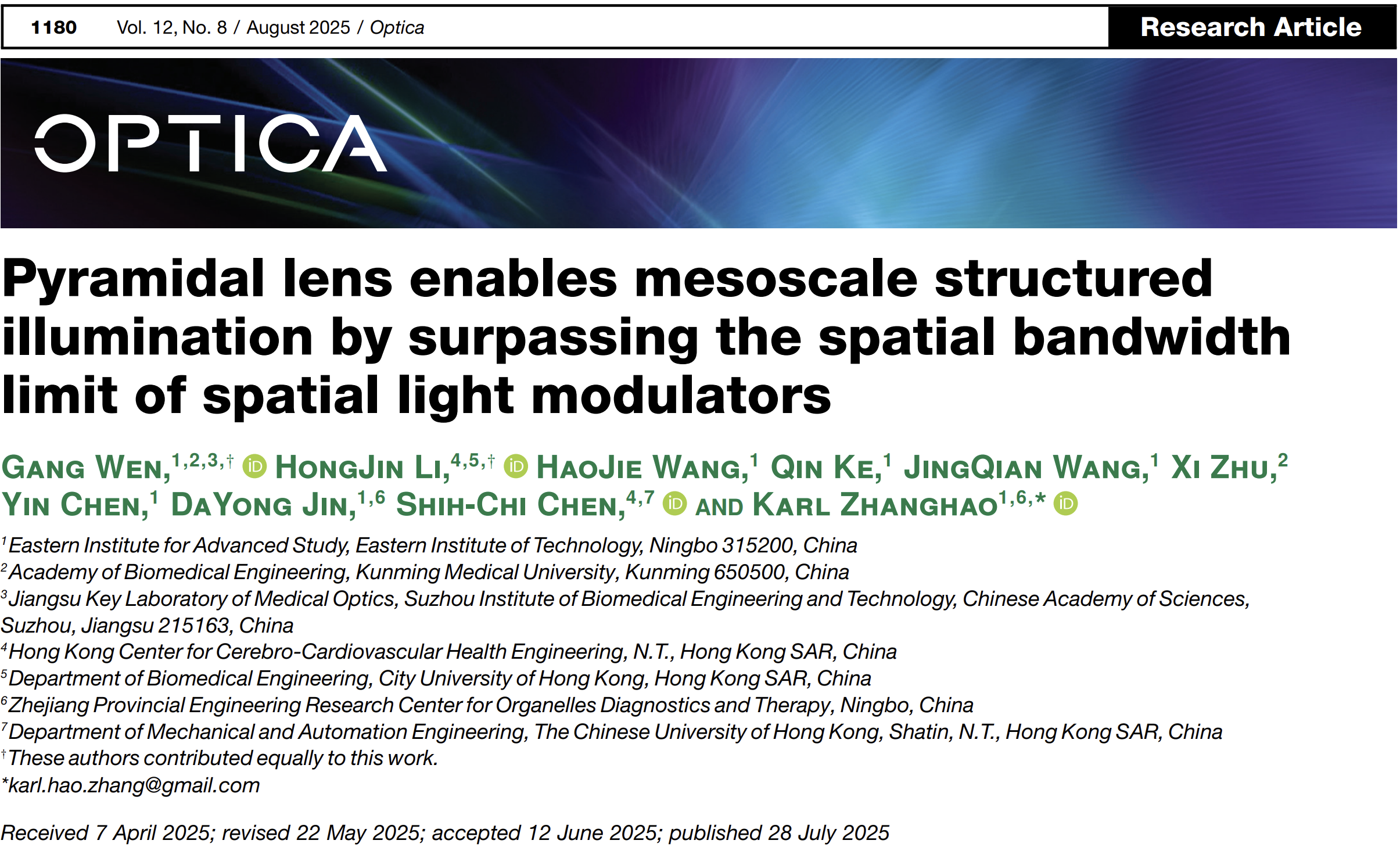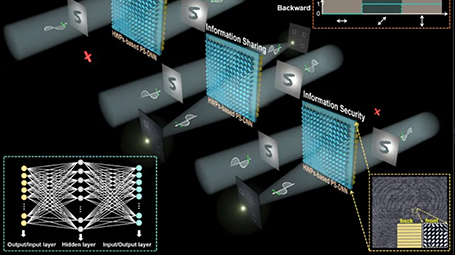Recently, a research team led by Assistant Professor Hao Zhang from the College of Engineering of EIT Ningbo, with collaborators, published their latest study titled "Pyramidal lens enables mesoscale structured illumination by surpassing the spatial bandwidth limit of spatial light modulators" in Optica, a top-tier international optics journal.

Inspired by photographic beam-splitting attachments, the team innovatively developed a pyramid lens that enables the generation and modulation of mesoscale structured illumination using only a small-sized projection chip. This advancement increases the equivalent pixel count of the chip by more than two orders of magnitude, providing a new solution for high-throughput super-resolution imaging and large-scale three-dimensional metrology.
The pyramidal lens features a simple structure, ease of fabrication, and low cost, holding strong potential for broad applications in optical imaging, machine vision, and industrial inspection.
EIT Ningbo is the first affiliation of the paper. Assistant Professor Hao Zhang is the corresponding author. Co-first authors include Gang Wen, Visiting Scholar at EIT Ningbo and Associate Researcher at Kunming Medical University, and Hongjin Li, Ph.D. student at City University of Hong Kong. Other collaborators include Professor Shiqi Chen from The Chinese University of Hong Kong and Chair Professor Dayong Jin, Fellow of Australian Academy of Technology and Engineering at EIT Ningbo.











